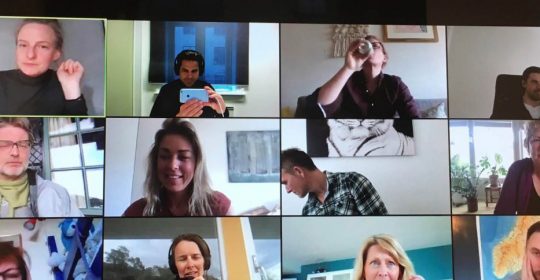Your time to shine – HR data can have a powerful impact on your strategy work
Published: 13th September 2022By: Vegard Skuterud
Today's labour market is starved for competence. For many, the alternative to a constant search for new hires can be found in making optimal use of the talent within the organisation. Those of you who work with HR should therefore demand your place in the cockpit.
Human resources, relationships and our overall competence are something we constantly measure. We measure and measure. We present and present. We go around in a hamster wheel of analysis. When you can link the current situation’s insights to the strategy, you can stop the dizzying dance. HR will then have a greater hand in the process when a new course is set out. The challenge is that many don’t quite know why and how they should be involved in the analyses. Everyone wants data, but no one quite knows how to use it.
The rate of change is constantly increasing. Those of you who work with HR must therefore ensure that your company learns what is required to take on the future.
Many of us have sat through countless seminars on organisational culture and change management for many decades. Unfortunately, however, HR is often seen as being on the operations side of things. After all, that’s where the value creation takes place.
But HR holds some invaluable wisdom that could be like striking gold for your organisation, the knowledge of your employees and your employees’ competence. The company’s human capital.
One reason why HR is not a more relevant partner for management may be the expectations senior management, and perhaps also the HR department itself, have for HR data. Most of all, we like to receive confirmation that we’re on the right track: good numbers strengthen the ego and produce appreciative nods from the management group.
“Thanks for this, we’ll take it from here,” says the senior management.
Is data only relevant to understanding the status quo?
Perhaps you should have stayed in those management meetings and shown how HR can take responsibility for the strategic development, based on the data you have just presented. Then you’ll experience being taken seriously in a different way.
It can get really exciting to work with HR when you can demonstrate patterns in your data. When you provide insight into the driving factors that promote or inhibit change, your message becomes powerful. You can demonstrate the value of your in-depth understanding of the system, the people and the company’s culture.
Seek deeper insight
The gaps presented by HR motivate the management team to take action. Many times, however, decisions are made based on assumptions. The big pitfall is that you think you know your own target group well enough. We almost always need to learn more and shouldn’t just move ahead thinking we already know what is needed.
Let me give an example. As a European Economic Area member, more and more workers must comply with EU regulations. They must have a certain legal competence. What if this employee is a car mechanic who already at a young age opted out of theory in favour of practical work. How do we get the car mechanic interested in law? The answers to this can’t be found in the numbers alone. You need to understand the target audience.
The car mechanic needs to have the law at his or her fingertips, the knowledge can’t lie buried in a binder in the office or in a complicated e-learning course somewhere on the Internet. We must understand what it means to be them. What are their challenges, and what motivates them to learn? It’s not the strategic decisions that represent the change. The strategy work isn’t finished until the individual car mechanic has learned what they need to learn. Learning is change, and it is whether one is able to impact that is decisive for whether the business can make good on their strategy.
It’s only when you understand the strategy, understand the numbers and understand what engages the various target groups in the company that you can truly become the most important person for the management team.
When I collaborate with HR, we’re focussed on understanding what drives and inhibits change. Together with my colleagues at Task, we work to create effective methods and technologies.
Stay on top of the strategy
So why should we care about data and insight? Because we can’t afford to experiment. Efforts must be directed where they have the greatest effect.
Many businesses say that by 2025, 50% of employees will need to have acquired new skills. That’s actually how fast the pace of change is going today. A few years ago, car mechanics were mostly concerned with cars and mechanics. Today, the tasks are far more diverse and encompass digital competence, electronics… and law.
Stay close to the strategy. Tell the management that not only are we going to develop our own employees, but we’re also going to win the best candidates in the next hiring round. We need, in brief, to be better prepared.
The closer HR is to the actual inner workings of the operation, the greater the probability that you will hit the mark when you have to implement new measures to raise skills, put together teams, establish new work processes, create learning and drive change.
HR must be keenly aware of what the data will be used for. Is the data supposed to motivate change, explain phenomena, is it supposed to monitor something or tell us something about who we are? Different purposes require different approaches.
What you really want to know is whether your organisation has the right staffing, has the right expertise and is working intelligibly towards a common goal and the strategy that has been laid out.
So, you’re clear for take-off. Let’s finish by going over the pilot’s checklist:
- What is the purpose of the insight work?
- Is the insight connected to the strategy?
- Do you know what motivates different employees to learn and change?
- Do you know what’s stopping them?
- Do you think – or do you know? —
The article was first published in HRmagasinet.




